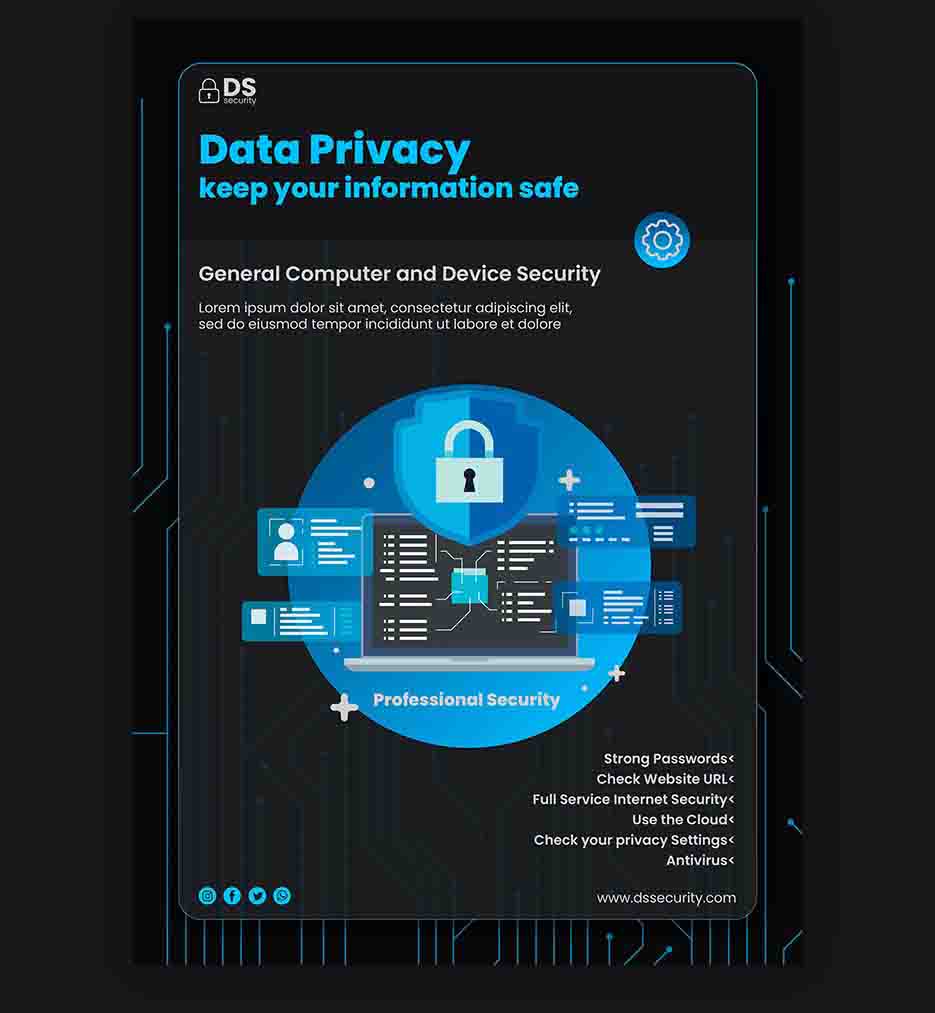Cybersecurity service has become essential for any individual or organization
In today's business world, cybersecurity is essential to protect data and systems from increasing cyber threats. The cybersecurity service provides a set of solutions and procedures aimed at securing the IT environment within the company, and reducing the risks of exposure to cyberattacks, data breaches, malware, phishing, and other threats.

Cybersecurity service objectives:
1- Data protection: This includes protecting the company’s confidential and private data, protecting customer and employee data, and preventing unauthorized access to data.
2- Maintaining business continuity: Ensuring the continuity of business operations without interruption in the event of a cyber attack.
3- Compliance with laws and regulations: Ensure compliance with laws and regulations related to data protection and security Cyber.
4- Enhancing the company’s reputation: Protecting the company’s reputation by demonstrating its commitment to protecting its data and systems.
Cybersecurity service elements:
Risk assessment
Establish policies and procedures
Training and awareness
Technical protection
Monitor and responds
Penetration testing

Cybersecurity work areas
The field of cybersecurity includes a wide range of specializations and functions aimed at protecting data, systems and networks from cyber threats.
Some of the key cybersecurity work areas include:
- 01. Network security
-
- Network Security Engineer: Responsible for the design, implementation, and operation of secure network systems.
- Network Security Analyst: Responsible for monitoring network systems and detecting and investigating cyber threats.
- Network Penetration Testing: Responsible for testing network systems to find and address vulnerabilities.
- 02. Application security
-
- Application Security Engineer: Responsible for designing and developing secure applications.
- Application Security Analyst: Responsible for reviewing applications to find and address vulnerabilities.
- Application Penetration Testing: Responsible for testing applications to find and address vulnerabilities.
- 03. Information Security
-
- Information Security Analyst: Responsible for assessing cybersecurity risks and implementing security controls.
- Digital Forensic Specialist: Responsible for investigating cybercrimes and collecting digital evidence.
- Security Compliance Officer: Responsible for ensuring that the organization complies with laws and regulations related to cybersecurity.
- 04. Operational cybersecurity
-
- Security Operations Center (SOC) Analyst: Responsible for monitoring security systems and networks and detecting and investigating cyber threats.
- Incident Responder: Responsible for responding to and handling cybersecurity incidents.
- Threat Hunter: Responsible for finding and remediating new cyber threats.